
Macuahuitl là một vũ khí có hình dáng giống thanh kiếm gỗ. Hai mặt của nó được làm từ một viên đá thủy tinh núi lửa. Nó có chiều dài từ 0,9 m- 1,2m, rộng 0,072m. Do vũ khí này không có đầu nhọn nên nó thường không được sử dụng để đâm đối phương. Nhưng do thiết kế hai bên sườn sắc nhọn nên nó có khả năng gây ra những vết thương sâu khi tấn công kẻ thù.

Kpinga là một con dao ném có nhiều cánh của người Azande sống tại Nubia. Loại vũ khí này có 3 hình dạng khác nhau. Nó do gia tộc Avongara hùng mạnh sản xuất và thường được các chiến binh sử dụng. Dao ném Kpinga còn được gọi là Hunga Munga. Loại dao ném này có chiều dài gần 26 cm.

Kiếm Pinuti là một vũ khí khác thường của Visayas, Philippines. Ban đầu, vũ khí này được sử dụng như một dụng cụ nông nghiệp. Lưỡi kiếm thường dài khoảng 41 – 45,7 cm. Trong các hoạt động nông nghiệp, nó thường bị hoen gỉ do tiếp xúc với chất lỏng của thực vật và động vật. Khi nông dân dùng nó để chiến đấu, lưỡi kiếm sẽ được đánh bóng sạch sẽ, mài sắc và sáng bóng như những thanh kiếm.

Emeici là một loại vũ khí truyền thống của Trung Quốc. Nó được sử dụng để đâm đối phương. Theo thiết kế, nó gồm hai thanh kim loại có đầu nhọn, phía trên gắn thêm một chiếc nhẫn có thể tháo rời và đeo ở ngón tay giữa. Loại vũ khí khác thường này có nguồn gốc từ núi Nga Mi. Ngày nay, những người theo học môn võ thuật wu shu vẫn sử dụng loại vũ khí kỳ lạ này.

Chu Ko Nu là một vũ khí của người Trung Quốc. Nó được coi là tổ tiên của súng trường tự động. Chu Ko Nu có hình dáng của một cây cung và sử dụng đạn để bắn. Loại vũ khí này có tầm bắn tốt và khả năng nạp đạn trong thời gian ngắn. Lần cuối cùng nó được sử dụng là trong cuộc chiến tranh Trung-Nhật năm 1894-1895.

Scissor là một loại vũ khí của các đấu sĩ La Mã. Nó có nghĩa là “máy cắt, dao pha”. Vũ khí này được các võ sĩ giác đấu sử dụng để bảo vệ cánh tay của mình cũng như ngăn chặn cú đánh phản công của đối thủ một cách nhanh chóng và hiệu quả. Mặc dù Scissor có hình dáng tương đối nhỏ nhưng loại vũ khí này có thể gây ra một vết thương nghiêm trọng cho kẻ thù.

Katar có nguồn gốc từ Tamil Nadu, Ấn Độ. Nó là một loại dao có điểm đặc trưng là tay ngang kẹp hình chữ H và có tới 3 lưỡi dao có thể chuyển động nhập làm 1 hoặc tách ra, tấn công kẻ thù theo 3 hướng. Loại vũ khí này phổ biến ở khu vực Nam Á và Ấn Độ. Nó cũng được sử dụng trong các nghi lễ thờ cúng.

“Man Catcher” là một loại vũ khí cổ xưa được người châu Âu sử dụng vào cuối thế kỷ XVIII. Nó được thiết kế có các đầu nhọn ở bên trong và có thể khiến đầu một người đàn ông mắc kẹt trong đó. Nó được sử dụng để kéo những người đàn ông ra khỏi lưng ngựa.

“Bàn tay sắt” Zhua là một vũ khí khác thường của người Trung Quốc. Loại vũ khí này có hình bàn tay người và các móng vuốt sắc nhọn có khả năng đâm xuyên hay cào xé da thịt con người.

Bagh Nakh là một vũ khí có hình móng vuốt của người Ấn Độ, được sử dụng trong những năm 1700 – 1800. Cụm từ bagh nakh trong tiếng Hindi có nghĩa là móng vuốt hổ. Nó được thiết kế để làm tổn thương da và cơ của đối phương. Nó được người dùng đeo vào bàn tay. Mỗi móng vuốt được làm theo đúng vị trí của bàn tay để tấn công đối phương. Hoàng đế Maratha Shivaji đã dùng nó để đánh bại Tướng Afzal Khan của Bijapur. Sau này, các cô gái ở Bengal, Ấn Độ bắt đầu mang một vũ khí bén nhọn giống như bagh nakh khi đi học để bảo vệ bản thân.
súng lục do Ấn chế tạo với dao thép của Đức
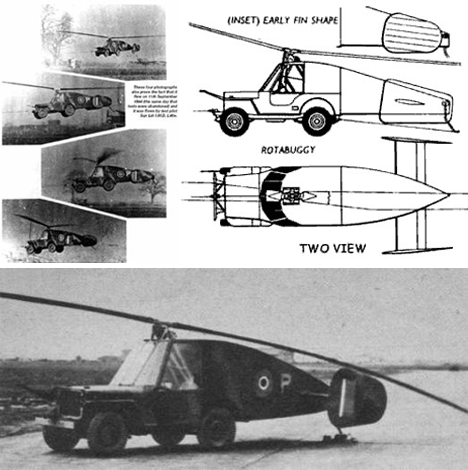 xe Jeep bay do Anh chế tạo trong TC 2
xe Jeep bay do Anh chế tạo trong TC 2
The flying jeep was created to fulfill a contract to create a lightweight helicopter that could be landed in any terrain. Several prototypes were created but they never went into full production. No matter how good it looked on paper, the flying jeep’s goofy appearance gives a good indication of why such a flimsy hybrid would not do well in the heat of battle.
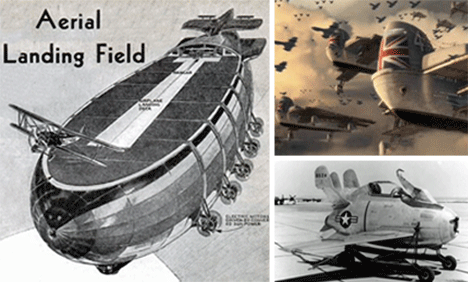
Flying aircraft carriers had a brief stint in the collective imagination of a wartime populace. Much like hoverpacks and flying cars, the idea never came to fruition, only to live on in steampunk style novels and shows. They would be easy to shoot down, consume inordinate amounts of fuel, and had few advantages to counter an extended list of cons.
đại pháo trên đường ray do Anh chế tạo trong TC 2
Corkscrew tanks didn’t run on the typical caterpillar type treads, instead propelled by giant corkscrews. Just like an electric screwdriver pulls into a piece of wood, so these treads would cruise along the ground, regardless of terrain. Their travel was a bit erratic, and the tanks had to be too lightweight to be useful in combat.
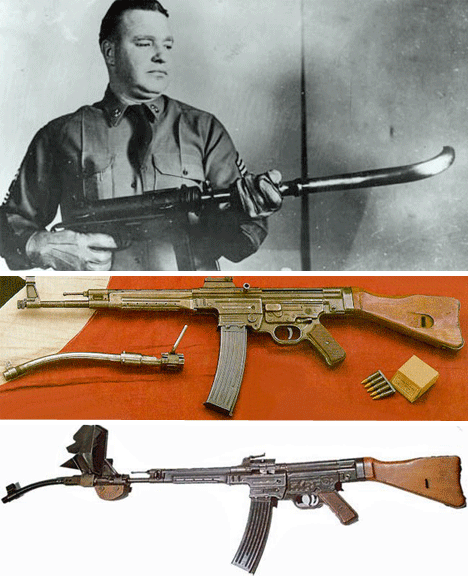
When it comes to urban fighting, every corner can hide a group of enemy soldiers. Even the slightest advantage can win battles, so various weapons were designed to allow soldiers to see around corners, and fire around them behind the protection of a concrete wall.
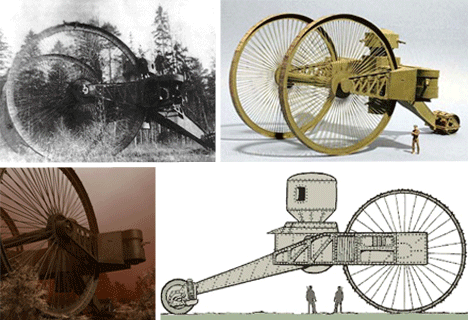
The Tsar tank was Russian built with two wheels 27 feet in diameter that pulled a much smaller set of wheels behind. Mounted with large and heavy guns, it was one of the few tanks that didn’t have treads, and was designed to overrun any obstacle. The design was bulky and ill conceived for the reality of battle, and was quickly dropped.
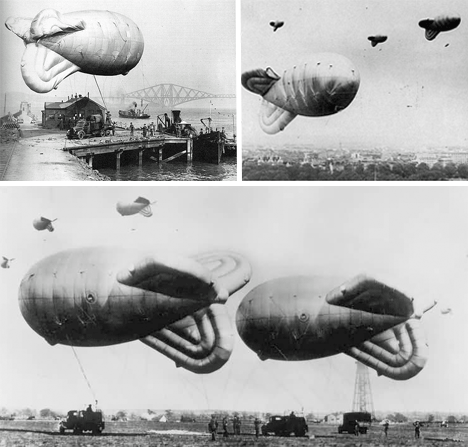
Barrage balloons were strung up by the hundreds over cities during World War II. Like floating mines, they would make it difficult for low flying enemy aircraft to make devastating bombing runs by threatening to bring them down with their taut wires and incendiary devices.

With the scarcity of metal toward the end of World War II, Project Habbakuk was an attempt to create aircraft carriers out of pykrete, a mixture of ice and wood pulp. Thick enough to withstand enemy fire, and easily repaired, pykrete would enable the construction of large ships with the uses of minimal resources. The war was completed before any of these ships became a reality.
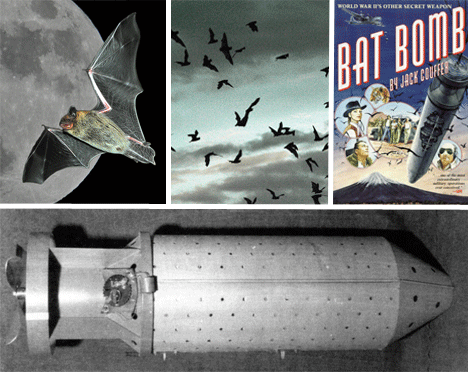
It’s surprising a prototype of a bat bomb was ever even made, but it was. The idea was simple: place incendiary explosive devices on Mexican Free-Tailed Bats, lower their temperature inside a bomb so they hibernate in transit, and then release them over an enemy city to roost in the infrastructure below. At a specific time, all the bats would explode in a thousand fiery blazes, igniting fires across the city.
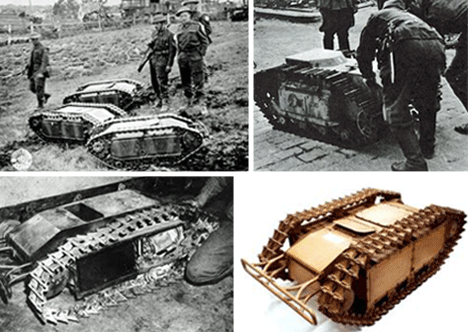
The Goliath tracked mine was a remote controlled anti tank mine that carried nearly 200 pounds of explosives and would be steered toward enemy troop or tank formations and detonated. These mines were created by the Germans and used throughout World War II, on all fronts, and were known as beetle tanks by Allied forces.

súng lục do Ấn chế tạo với dao thép của Đức
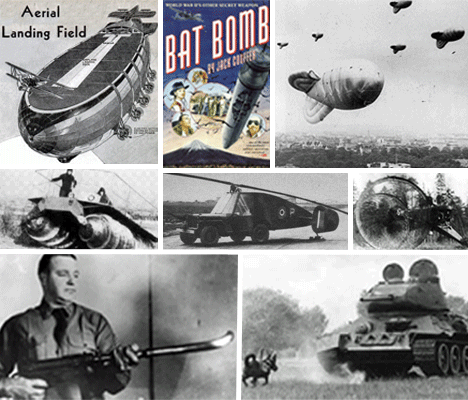
 NKL-26 Aerosan do Nga chế tạo trong TC 2
NKL-26 Aerosan do Nga chế tạo trong TC 2
 xe Jeep bay do Anh chế tạo trong TC 2
xe Jeep bay do Anh chế tạo trong TC 2The flying jeep was created to fulfill a contract to create a lightweight helicopter that could be landed in any terrain. Several prototypes were created but they never went into full production. No matter how good it looked on paper, the flying jeep’s goofy appearance gives a good indication of why such a flimsy hybrid would not do well in the heat of battle.

Flying aircraft carriers had a brief stint in the collective imagination of a wartime populace. Much like hoverpacks and flying cars, the idea never came to fruition, only to live on in steampunk style novels and shows. They would be easy to shoot down, consume inordinate amounts of fuel, and had few advantages to counter an extended list of cons.
đại pháo trên đường ray do Anh chế tạo trong TC 2
 chó chống tăng
chó chống tăng
 lừa chống tăng
lừa chống tăng
 bom chuột
bom chuột

 bom lửa do Nhật chế tạo trong TC 2
bom lửa do Nhật chế tạo trong TC 2
Corkscrew tanks didn’t run on the typical caterpillar type treads, instead propelled by giant corkscrews. Just like an electric screwdriver pulls into a piece of wood, so these treads would cruise along the ground, regardless of terrain. Their travel was a bit erratic, and the tanks had to be too lightweight to be useful in combat.
When it comes to urban fighting, every corner can hide a group of enemy soldiers. Even the slightest advantage can win battles, so various weapons were designed to allow soldiers to see around corners, and fire around them behind the protection of a concrete wall.

The Tsar tank was Russian built with two wheels 27 feet in diameter that pulled a much smaller set of wheels behind. Mounted with large and heavy guns, it was one of the few tanks that didn’t have treads, and was designed to overrun any obstacle. The design was bulky and ill conceived for the reality of battle, and was quickly dropped.

Barrage balloons were strung up by the hundreds over cities during World War II. Like floating mines, they would make it difficult for low flying enemy aircraft to make devastating bombing runs by threatening to bring them down with their taut wires and incendiary devices.

With the scarcity of metal toward the end of World War II, Project Habbakuk was an attempt to create aircraft carriers out of pykrete, a mixture of ice and wood pulp. Thick enough to withstand enemy fire, and easily repaired, pykrete would enable the construction of large ships with the uses of minimal resources. The war was completed before any of these ships became a reality.

It’s surprising a prototype of a bat bomb was ever even made, but it was. The idea was simple: place incendiary explosive devices on Mexican Free-Tailed Bats, lower their temperature inside a bomb so they hibernate in transit, and then release them over an enemy city to roost in the infrastructure below. At a specific time, all the bats would explode in a thousand fiery blazes, igniting fires across the city.

The Goliath tracked mine was a remote controlled anti tank mine that carried nearly 200 pounds of explosives and would be steered toward enemy troop or tank formations and detonated. These mines were created by the Germans and used throughout World War II, on all fronts, and were known as beetle tanks by Allied forces.











0 nhận xét:
Đăng nhận xét